Hypolipidemic
How to submit an article:
- Registered users can submit any published journal article that has a unique DOI (Digital Object Identifier) name or link to Research Hub.
- For example, you can paste the full DOI link:
https://doi.org/10.1109/5.771073or just the DOI name:10.1109/5.771073into the field above and click submit. - The person who is first to submit a valid article to Research Hub will forever be credited for it, and every article submission earns you +6 Research Points.
Published research studies are articles that present the findings of original research that has undergone a peer-review process and has been made publicly available in scholarly journals, books or other media.
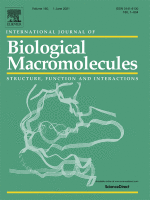
Extraction, structural-activity relationships, bioactivities, and application prospects of Pueraria lobata polysaccharides as ingredients for functional products: A review
2023 Jul International Journal of Biological Macromolecules Wang J, Dai G, Shang M, Wang Y, Xia C, Duan B, et al.
It was found that PLPs possess various bioactivities, including antioxidation, antidiabetic, immunomodulatory, hypolipidemic, antibacterial activities, regulation of intestinal flora, etc. The linkage patterns of glycosidic bonds might influence the bioactivities of PLPs. Meanwhile, PLPs have great development prospects in the health food and medical industries due to their non-toxicity. These discoveries establish a solid foundation for expanding the application and investigations of PLPs.
Review Article Ge Gen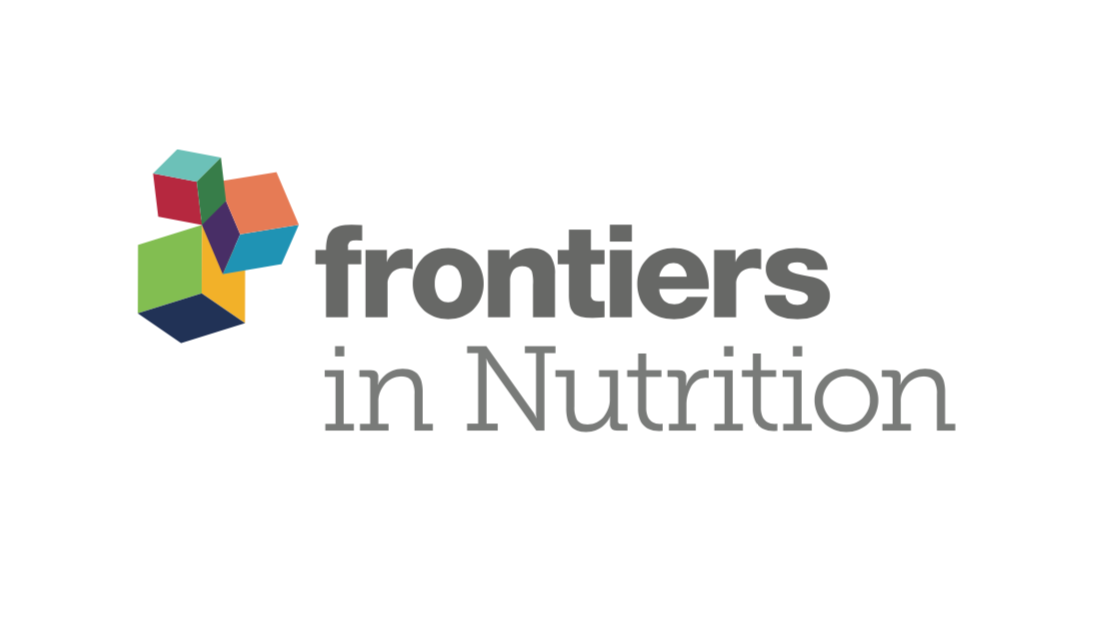
The hypolipidemic mechanism of chrysanthemum flavonoids and its main components, luteolin and luteoloside, based on the gene expression profile
2022 Sep 06 Frontiers in Nutrition Sun J, Wang Z, Lin C, Xia H, Yang L, Wang S, et al.
Chrysanthemum flavonoids (CF) exhibited 41 differential genes, including Sqle, Gck, and Idi1, associated with cholesterol and fatty acid metabolism, and glycolysis; luteolin intervention primarily influenced the synthesis and transport of cholesterol with 68 differential genes, including Acsl3, Cyp7a1, and Lpin1; while luteoloside intervention showed 51 differential genes, including Acaca, Cyp7a1, and Lpin1, mainly associated with fatty acid metabolism. The study highlights the complexity of CF's mechanism in improving hyperlipidemia, suggesting distinct pathways compared to luteolin and luteoloside, necessitating further investigation into the roles of other components.
Experimental Study Chrysanthemum Luteolin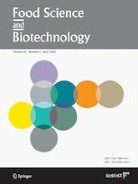
Mechanistic insights on burdock (Arctium lappa L.) extract effects on diabetes mellitus
2022 Apr 25 Food Science and Biotechnology Mondal SC, Eun JB
In conclusion, the active ingredients (isolated from different parts of the plant) found in burdock have been shown to be effective in treating a wide variety of conditions and numerous in vitro and in vivo evidences have suggested that A. lappa extract has the potential to impart therapeutic effect in diabetes due to the phytochemical content. Evidences also showed that burdock (A. lappa) extract contains inulin-type fructooligosaccharides, bioactive compounds such as chlorogenic acid, caffeic acid and its derivatives, tannins, saponins etc. which may exert positively on muscle glucose transport and insulin sensitivity rather than only inhibit the enzymatic activities. In addition, studying the acute toxicity of burdock root also revealed no toxic effects, which means the consumption of phenolic and flavone containing burdock root in foods and beverages or extract would be beneficial in alleviating diabetic complications.
Review Article Type 2 Diabetes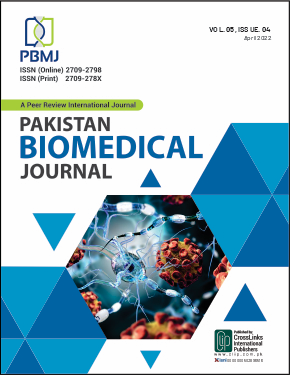
Hypolipidemic effect of Sesame Seed Oil: A Review
2022 Apr 30 Pakistan BioMedical Journal Arshad M, Ashfaq M, Rizwan B, Zanib R, Fatima A, Pervaiz R, et al.
Sesame seed oil and its derivatives have shown to be highly effective in managing hyperlipidemia and dyslipidemia due to their lipid ameliorating and anti-oxidative effects.
Experimental Study Review Article Cholesterol Sesame Oil Hypercholesterolemia
Health Benefits of Coconut Water
2022 Jan Reference Series in Phytochemistry Rethinam P, Krishnakumar V
Review Article Osteoporosis Cardiovascular DiseaseCoconut water possesses unique compound profiles that imbue it with a broad spectrum of medical properties, incorporating aspects of nutrition, pharmacology, and disease prevention.
Research insights are moderated by the Research Hub team and offer an at-a-glance overview of interesting research findings.

2022 Reference Series in Phytochemistry
Coconut water possesses unique compound profiles that imbue it with a broad spectrum of medical properties, incorporating aspects of nutrition, pharmacology, and disease prevention.
Review Article Cardiovascular Disease Osteoporosis
Health Benefits of Coconut Water
Rethinam P, Krishnakumar V
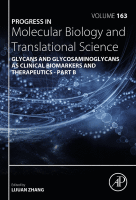
2019 Progress in Molecular Biology and Translational Science
Tremella fuciformis polysaccharide, a major bioactive component in the edible medicinal mushroom, exhibits substantial health benefits, including enhancing the immune system, combatting tumors, and delaying aging.
Network Pharmacology Snow Fungus
Tremella polysaccharide: The molecular mechanisms of its drug action
Yang D, Liu Y, Zhang L.
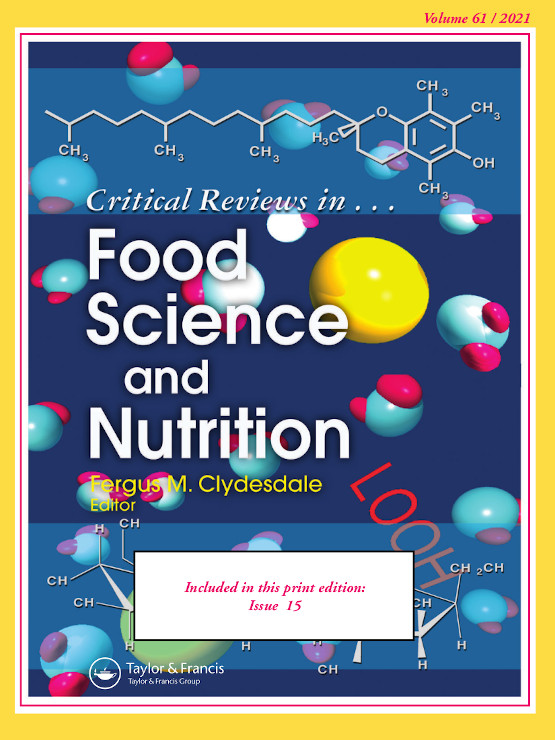
2019 Critical Reviews in Food Science and Nutrition
Black pepper, beyond its culinary use, offers medicinal benefits like antimicrobial, antioxidant, anticancer, anti-diabetic, and anti-inflammatory properties mainly attributed to the compound piperine.
Systematic Review Black Pepper
A systematic review on black pepper (Piper nigrum L.): from folk uses to pharmacological applications
Takooree H, Aumeeruddy MZ, Rengasamy KRR, Venugopala KN, Jeewon R, Zengin G, et al.

2014 Drug Design, Development and Therapy
A mixture of active polysaccharides from Goji berries have shown multiple pharmacological activities, including anti-aging, antioxidative, anti-fatigue, anticancer, anti-diabetic, anti-viral, hepatoprotective, cardioprotective, neuroprotective, hypolipidemic, radioprotective, anti-osteoporosis, anti-inflammatory, and immunomodulating effects.
Review Article
An evidence-based update on the pharmacological activities and possible molecular targets of Lycium barbarum polysaccharides
Cheng J, Zhou Z, Sheng H, He L, Fan X, He Z, et al.
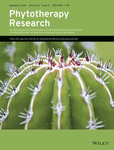
2013 Phytotherapy Research
Pomegranate juice intake for two weeks significantly reduces blood pressure and may improve heart health by lowering vascular endothelial adhesion molecule-1 levels.
Clinical Study High Blood Pressure Pomegranate
Clinical Evaluation of Blood Pressure Lowering, Endothelial Function Improving, Hypolipidemic and Anti‐Inflammatory Effects of Pomegranate Juice in Hypertensive Subjects
Asgary S, Sahebkar A, Afshani MR, Keshvari M, Haghjooyjavanmard S, Rafieian‐Kopaei M
Review Articles
Review articles summarise and critically evaluate the current state of research on a specific topic or field by synthesising multiple primary research studies.

Extraction, structural-activity relationships, bioactivities, and application prospects of Pueraria lobata polysaccharides as ingredients for functional products: A review
2023 Jul International Journal of Biological Macromolecules Wang J, Dai G, Shang M, Wang Y, Xia C, Duan B, et al.
It was found that PLPs possess various bioactivities, including antioxidation, antidiabetic, immunomodulatory, hypolipidemic, antibacterial activities, regulation of intestinal flora, etc. The linkage patterns of glycosidic bonds might influence the bioactivities of PLPs. Meanwhile, PLPs have great development prospects in the health food and medical industries due to their non-toxicity. These discoveries establish a solid foundation for expanding the application and investigations of PLPs.
Review Article Ge Gen
Mechanistic insights on burdock (Arctium lappa L.) extract effects on diabetes mellitus
2022 Apr 25 Food Science and Biotechnology Mondal SC, Eun JB
In conclusion, the active ingredients (isolated from different parts of the plant) found in burdock have been shown to be effective in treating a wide variety of conditions and numerous in vitro and in vivo evidences have suggested that A. lappa extract has the potential to impart therapeutic effect in diabetes due to the phytochemical content. Evidences also showed that burdock (A. lappa) extract contains inulin-type fructooligosaccharides, bioactive compounds such as chlorogenic acid, caffeic acid and its derivatives, tannins, saponins etc. which may exert positively on muscle glucose transport and insulin sensitivity rather than only inhibit the enzymatic activities. In addition, studying the acute toxicity of burdock root also revealed no toxic effects, which means the consumption of phenolic and flavone containing burdock root in foods and beverages or extract would be beneficial in alleviating diabetic complications.
Review Article Type 2 Diabetes
Hypolipidemic effect of Sesame Seed Oil: A Review
2022 Apr 30 Pakistan BioMedical Journal Arshad M, Ashfaq M, Rizwan B, Zanib R, Fatima A, Pervaiz R, et al.
Sesame seed oil and its derivatives have shown to be highly effective in managing hyperlipidemia and dyslipidemia due to their lipid ameliorating and anti-oxidative effects.
Experimental Study Review Article Cholesterol Sesame Oil Hypercholesterolemia
Health Benefits of Coconut Water
2022 Jan Reference Series in Phytochemistry Rethinam P, Krishnakumar V
Review Article Osteoporosis Cardiovascular DiseaseCoconut water possesses unique compound profiles that imbue it with a broad spectrum of medical properties, incorporating aspects of nutrition, pharmacology, and disease prevention.
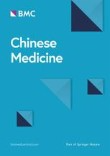
Traditional application and modern pharmacological research of Eucommia ulmoides Oliv.
2021 Aug 06 Chinese Medicine Huang L, Lyu Q, Zheng W, Yang Q, Cao G
In summary, extensive in vitro and in vivo data have revealed that E. ulmoides possess multiple excellent biological activities, including cardiovascular system regulation, anti-osteoporotic, anti-inflammatory, antioxidant, hypolipidemic, neuroprotective, hypoglycemic, anti-obesity, anti-diabetic, hepatoprotective and renal protective, anti-cancer, immunoregulation, improving erectile, anti-fatigue, anti-aging, anti-fungal, anti-bacterial, supporting the promising therapeutic application of E. ulmoides in various human diseases.
Review ArticleClinical Trials
Clinical trials are research studies that involve people and are conducted to evaluate the safety and efficacy of new treatments or interventions, such as drugs, medical devices, or behavioural therapies.
Study Protocols
Published study protocols are detailed plans that outline the objectives, methodology, statistical analyses, and organisation of a research study that have been made publicly available for others to review and use as a reference.
Presentation Slides

Review Article
Coconut water possesses unique compound profiles that imbue it with a broad spectrum of medical properties, incorporating aspects of nutrition, pharmacology, and disease prevention.
Rethinam P, Krishnakumar V

Network Pharmacology
Tremella fuciformis polysaccharide, a major bioactive component in the edible medicinal mushroom, exhibits substantial health benefits, including enhancing the immune system, combatting tumors, and delaying aging.
Yang D, Liu Y, Zhang L.

Systematic Review
Black pepper, beyond its culinary use, offers medicinal benefits like antimicrobial, antioxidant, anticancer, anti-diabetic, and anti-inflammatory properties mainly attributed to the compound piperine.
Takooree H, Aumeeruddy MZ, Rengasamy KRR, Venugopala KN, Jeewon R, Zengin G, Mahomoodally MF

Review Article
A mixture of active polysaccharides from Goji berries have shown multiple pharmacological activities, including anti-aging, antioxidative, anti-fatigue, anticancer, anti-diabetic, anti-viral, hepatoprotective, cardioprotective, neuroprotective, hypolipidemic, radioprotective, anti-osteoporosis, anti-inflammatory, and immunomodulating effects.
Cheng J, Zhou Z, Sheng H, He L, Fan X, He Z, Sun T, Zhang X, Zhao RJ, Gu L, Cao C, Zhou S

Clinical Study
Pomegranate juice intake for two weeks significantly reduces blood pressure and may improve heart health by lowering vascular endothelial adhesion molecule-1 levels.
Asgary S, Sahebkar A, Afshani MR, Keshvari M, Haghjooyjavanmard S, Rafieian‐Kopaei M
Executive Summary
Write an executive summary in the form of a blog article on the topic of "Research into Chinese medicine treatment for Hypolipidemic" summarising the research below and using language that can be easily understood by patients and avoiding medical jargon using a professional and caring tone of voice.
Write an executive summary in the form of a blog article on the topic of "Researched Chinese medicine treatments for Hypolipidemic" summarising the research below in an objective and easy to understand way, and using language that can be easily understood by patients. Group the article into Chinese medicine treatments first, followed by nutrition and other treatments. Avoid using medical jargon and use a professional and caring tone of voice.
Write me a concise but easy to understand executive summary on the topic of "Chinese medicine treatments for Hypolipidemic" based on the following research that I will give you. Your summary should be 2 paragraphs long in Australian English spelling and include references to the studies.
A Review Article published in 2022 in the journal Reference Series in Phytochemistry found that Coconut water possesses unique compound profiles that imbue it with a broad spectrum of medical properties, incorporating aspects of nutrition, pharmacology, and disease prevention. The study utilized comprehensive analysis to assess the chemical profile of coconut water, identifying a range of components including phytohormones, enzymes, antioxidant compounds, vitamins, minerals, and phenolic compounds. These components are known to contribute to the water's biological activity and pharmacological effects, thereby enabling a raft of medicinal properties inherent to coconut water. The water was found to feature anti-microbial, anti-bacterial, anti-inflammatory, anti-hypertensive, rejuvenating, hepatoprotective, hypolipidemic, and diuretic properties. An examination of the therapeutic effects of coconut water revealed a significant impact on gastric dysfunction, dysentery, and child malnutrition alongside notable capabilities to manage hypertension. The water was found to promote exercise performance, reduce swelling, dissolve kidney stones, improve kidney function, improve digestion, relieve constipation, reduce the risk of heart disease, lower high blood pressure, and improve cholesterol levels. Consumption of tender coconut water was specifically found to reduce the risk of heart disease, help prevent Alzheimer’s disease pathologies and prevent osteoporosis in experimental animals. The unique nutritional profile of coconut water was also found to provide it with the capacity to balance body chemistry and fight cancer.
A Network Pharmacology published in 2019 in the journal Progress in Molecular Biology and Translational Science found that Tremella fuciformis polysaccharide, a major bioactive component in the edible medicinal mushroom, exhibits substantial health benefits, including enhancing the immune system, combatting tumors, and delaying aging. The study analyzed various fractions of Tremella fuciformis polysaccharide (TFPS) which is extracted from the "Yiner" mushroom under different conditions leading to variations in molecular weight. The TFPS comprises various monosaccharides including mannose, xylose, fucose, glucuronic acid, glucose, and galactose. One of the characterized structures consists of a linear mannose backbone with branched off chains of xylose, fucose and glucuronic acid. Biochemical, pharmacological, and clinical studies involving TFPS spanning 46 years (1972-2018) were drawn from the likes of PubMed, China National Knowledge Infrastructure and Wanfang database and comprehensively reviewed. Over one hundred independent studies pointed to the multiple physiological and health-promoting effects of TFPS. These include benefits such as immunomodulation, antitumor, anti-oxidation, anti-aging, hypoglycemic, and hypolipidemic effects. An example of its practical application is its usage in enteric-coated capsules, approved by the Chinese Food and Drug Administration in 2002, to treat cancer patients suffering from leukopenia induced by chemotherapy and radiotherapy. This component is also used as a supplementary drug for the treatment of chronic persistent hepatitis and chronic active hepatitis, showing the versatility and progressive impact of TFPS.
A Systematic Review published in 2019 in the journal Critical Reviews in Food Science and Nutrition found that Black pepper, beyond its culinary use, offers medicinal benefits like antimicrobial, antioxidant, anticancer, anti-diabetic, and anti-inflammatory properties mainly attributed to the compound piperine. The study was a systematic review of existing scientific data on the traditional uses, composition, and pharmacological attributes of black pepper. Information was gathered from recognized databases such as Science Direct and Google Scholar, as well as books and other online resources. The study primarily focused on literature in English and evaluated traditional medicinal uses of black pepper in various regions, the common ailments it was used to address, and the preferred modes of preparation. The results of the study affirm the significant medicinal qualities of black pepper. Its antimicrobial activity was demonstrated against various pathogens, and it showed strong antioxidant effects against several reactive oxygen and nitrogen species. The research also highlighted the anticancer effects of black pepper on cell lines from various sites including breast, colon, cervix, and prostate. Furthermore, the benefits of black pepper in managing diabetes and lipid levels in the body were also confirmed. It was also noted for its anti-inflammatory, analgesic, anticonvulsant, and neuroprotective effects. Piperine was identified as the major bioactive compound in black pepper which is responsible for these beneficial effects along with other compounds such as piperic acid, piperlonguminine, and more.
A Review Article published in 2014 in the journal Drug Design, Development and Therapy found that A mixture of active polysaccharides from Goji berries have shown multiple pharmacological activities, including anti-aging, antioxidative, anti-fatigue, anticancer, anti-diabetic, anti-viral, hepatoprotective, cardioprotective, neuroprotective, hypolipidemic, radioprotective, anti-osteoporosis, anti-inflammatory, and immunomodulating effects. The mechanisms for these beneficial effects are multifaceted, involving a number of signaling molecules and pathways. A better understanding of how LBPs act on these signaling pathways and molecules can improve our knowledge on glycobiology. Further studies using systems pharmacology approaches such as proteomic and metabolomic analysis are needed to uncover the molecular target networks of LBPs. Despite the importance of Goji in the traditional Chinese medicine and increased popularity in Western countries, clinical safety data on LBPs are sparse. A safe and optimal use of herbal medicines like LBPs requires a full understanding of their pharmacokinetics, side effects, and mechanisms of action. The dose–response and dose–toxicity relationships of LBPs should be established in animal and human studies. It is essential to develop new formulations to ensure the maximum efficacy and effectiveness and minimum side effects of LBP-related health products.
A Clinical Study published in 2013 in the journal Phytotherapy Research found that Pomegranate juice intake for two weeks significantly reduces blood pressure and may improve heart health by lowering vascular endothelial adhesion molecule-1 levels. In the experiment, twenty-one hypertensive participants, aged between 30 to 67 years, were gathered and randomly assigned to consume either 150ml of fresh pomegranate juice per day or an equal quantity of water for a period of two weeks. The pomegranate juice was consumed in a single occasion between lunch and dinner. The blood pressure of these subjects, including systolic and diastolic pressures, were measured before and after the trial period. Additionally, levels of specific elements including lipid profile parameters, apolipoproteins A and B, intracellular adhesion molecule-1, vascular endothelial adhesion molecule 1, E-selectin, and other inflammatory and endothelial function biomarkers such as high-sensitivity C-reactive protein and interleukin-6, were also measured. The results showed that the consumption of pomegranate juice was associated with notable reductions in both systolic and diastolic blood pressures. The intake of pomegranate juice also resulted in a significant decrease in levels of vascular endothelial adhesion molecule 1, even though there was an increase in E-selectin levels. No observable influence appeared on the levels of intracellular adhesion molecule-1, high-sensitivity C-reactive protein, lipid profile parameters, apolipoproteins, or interleukin-6 from the juice consumption, indicating that pomegranate juice may specifically target certain elements related to heart health.
Moderation Tools
Topic
Sign In
Users not signed in are limited to viewing the 5 most recent items of content.